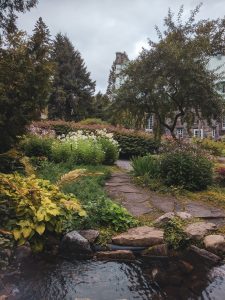10 Tips for Encouraging Biodiversity in Your Backyard
by Jane Marsh
Everyone is responsible for committing to global climate goals. Curating your backyard for biodiversity will incite significant change and improve the health of the species in your local area, nurturing them for continued well-being over pursuits that sap nature’s resources.
1. Limit Pesticides and Chemical Fertilizers
Pesticides protect plants and chemical fertilizers help them grow – but at what cost? Biodiversity suffers because it cannot withstand toxicity. The issue with them is that toxins extend beyond our backyards – pesticides increase air pollution and chemical fertilizers create poisonous environments for local aquatic wildlife.
This is an epidemic. The United States has been a major player in the global pesticide market for years. Opt for organic or chemical-free alternatives to ensure maximum biodiversity.
2. Learn More About Native Flora and Fauna
To maintain the sanctity of backyard biodiversity, it’s essential to know which species should be present and which ones shouldn’t. This includes protecting the life already on the land, like mature trees. Educate yourself with local resources, know what flowers grow naturally, and which bugs and critters should be allowed or avoided.
For instance, if you know there is a local weed that hurts biodiversity more than it helps, you can uproot them if they show itself. Just because it’s local doesn’t mean it’s always beneficial.
3. Create More Diverse Terrain and Habitats
 There is an abundance of small ways to add life to your backyard by creating small habitats to house various species, from fungi to critters, including:
There is an abundance of small ways to add life to your backyard by creating small habitats to house various species, from fungi to critters, including:
- Adding a log or pile of deadwood in a shady spot
- Leaving a patch of grass to grow taller than the rest
- Constructing a rock garden
- Scattering wildflower seeds to create meadows
Not every species likes freshly mown grass and direct sunlight, so make curated pockets of wilder terrain accordingly.
4. Get a Grip on Invasions
Familiarize yourself with species that are native to your area. Invasive species disrupt ecosystems and sometimes cause irreversible damage. Native species are suited to the conditions where you are, but they struggle to compete when unfamiliar insects or plants intrude.
Stay knowledgeable by finding resources to keep up with news regarding invasive species. You can also reach out to local groups like community gardens, universities, municipalities, or Facebook groups by sending pictures and asking questions like, “Can someone identify this, and is it supposed to be here?
5. Invite Birds
Planting enticing flowers and installing birdhouses and birdbaths will bring more music and color to your backyard. Many horticultural societies and botanic gardens offer bird-focused gardening tips to attract local varieties. However, it will depend on your area and which flowers you plant. For instance, planting sunflowers has a high chance of luring American goldfinches. Especially with climate change affecting birds and other animals, it's important to make our little contributions in ensuring that the planet is still a great place for habitation.
6. Add a Body of Water
This attracts biodiversity in every shape and size, animal and plant. But it also fosters a type of biodiversity humans often ignore – microorganisms. These are essential in keeping the food chain stable. Rain gardens or small ponds with consistent movement will allow nutrients to flow and feed all local lifeforms, from dragonflies and newts to frogs and even small mammals.
7. Make a Butterfly Garden
Creating homes for butterflies only increases the symbiotic nature of your backyard haven by:
- Pollinating flowers to keep other species interested in visiting
- Acting as a litmus test to inform homeowners the land is healthy
- Providing part of the food cycle for different life
The mental health benefits of witnessing their beauty are an added reward for increasing biodiversity.
8. Learn the Principles of Permaculture
If your backyard is regenerative and self-sustaining, biodiversity will continue to thrive. Permaculture discourages monocultures and encourages building living ecosystems for enduring equilibrium. This includes everything from growing the right grass to practicing composting to maintain soil integrity and provide nutrients for soil bacteria.
9. Attract Pollinators
Bees are far from the only pollinators out there. Invite butterflies, moths, bats, and small mammals by trimming weeds less often and planting plants known to attract pollinators.
Many of the world’s plants need pollinators to survive – over 180,000 species depend on them. Prioritizing pollinators is necessary because they nourish a substantial number of the plants human beings feast on or use in manufacturing.
10. Keep Tabs on Pets
Your backyard is now in an ideal spot – the garden is self-sustaining and there are plenty of microhabitats around the yard to support a wealth of life. However, letting cats, dogs, and other pets roam freely may unintentionally destroy all of this progress.
To deter curious animals from knocking over rock gardens or eating plants they shouldn’t, set up fenced-in areas for them to enjoy the outdoors.
Fostering Backyard Biodiversity
Humanity must restore some of the natural integrity we have taken to live in cities and homes. We live among, but not always as a productive part of, nature. Encouraging biodiversity in your backyard isn’t only helpful for local fauna and flora – it also keeps your property healthy and provides you with more nutritious food and more satisfied flowers.
Article by Jane Marsh
Jane works as an environmental and energy writer. She is also the founder and editor-in-chief of